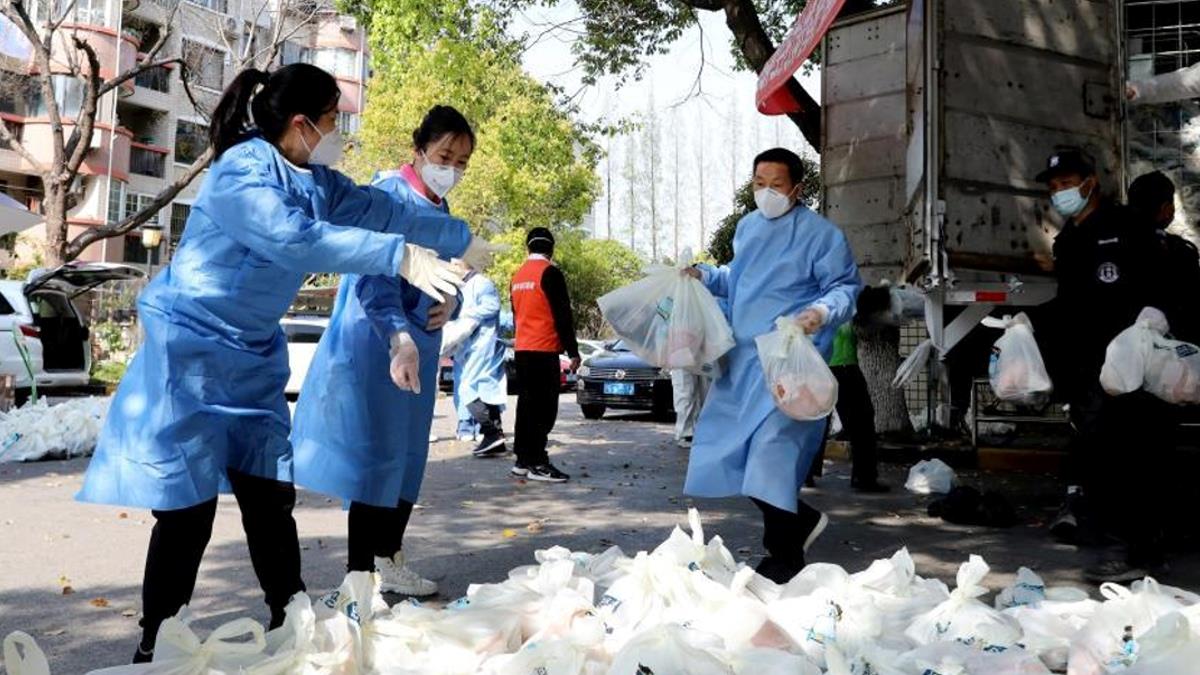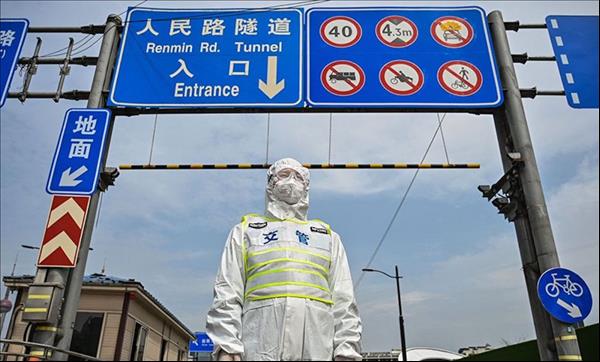
Shanghai Lockdown Toll Coming Into Statistical View
Shanghai authorities are planning to relax lockdown measures from Wednesday (June 1) but say it will take time for businesses to recover due to serious disruptions in supply chains and logistics, and weakened consumer demand over the past two months.
But China's Covid lockdown season isn't over. The Covid situation in Beijing has not stabilized and on Monday the capital city reported new Covid cases at the community level. In response, Fengtai district in Beijing, with a population of 2.26 million, announced work-from-home arrangements for all workers between Tuesday and Sunday.
The lockdowns are broadly crimping China's economy. The Purchasing Managers Index (PMI) for May came in at 49.6, compared with 47.4 in April, still below the 50-point mark that separates growth from contraction, according to the National Bureau of Statistics. Non-manufacturing PMI was 47.8 in May, up from 41.9 in April.
Analysts said consumer demand remained weak after most shops in Shanghai were shut between mid-March and mid-May and it would take time to rebuild supply chains in the East China regions. Economists said the mobility restrictions remaining in place across China would still limit the recovery of home sales and credit demand in the near term.
After two months of lockdowns, Shanghai announced on Sunday that it would cancel most of its lockdown measures on June 1. As of Monday, 190,000 people in 531 lockdown zones were not allowed to leave their homes, while 450,000 people in 3,069 partial lockdown zones could not leave their villages.
The remaining 22.5 million people in the 66,490 prevention zones are required to reduce their mobility.
Zeng Qun, the deputy head of the Shanghai Civil Affairs Bureau, said all those in prevention zones would be allowed to move freely in the city while government departments could not limit these people's mobility for any reason.
However, Zeng added that outsiders needed to show a negative PCR test result obtained within 72 hours if they wanted to enter any community. Strict social distancing rules will still be in place, while deliverers and utility maintenance workers have to get approval before entering a community.
Xu Hejian, a spokesman for the Beijing government, said Monday the mission to maintain zero cases at the community level remained challenging as some Covid infections were newly identified outside the closed-loop environment.
Xu said it was important to maintain tough anti-epidemic rules in the capital.
Huachuang Securities said in a research report about the home appliance sector that it would take at least several months to rebuild consumer demand and supply chains in the East China region after the Shanghai lockdown.
During the past two months, most online and offline sales channels in Shanghai had been damaged by lockdown measures, Qin Yichao, an economist at Huachaung Securities, wrote in the report.
Between mid-March and mid-May, most shops were closed in the biggest commercial city in China, while people mainly bought fresh food, instead of home appliances, on the internet, Qin said.

Local authorities deliver food and necessities to residents in Shanghai on April 3, 2022. Photo: Xinhua
Total retail sales in Shanghai dropped 48.3% to 71.7 billion yuan (US$10.77 billion) in April from 138.8 billion yuan in the same period last year, the city's statistics bureau said on May 23.
The figure was slightly lower than the level recorded when the world's first Covid epidemic broke out in China in 2020. Spending on dining fell 69% year-on-year, while sales of household goods declined 58% in April.
Qin said the supply chain for the home appliance sector in the East China region had been seriously disrupted between April and May. He said similar disruptions would be seen in Beijing and Henan and Hebei provinces as these places still had Covid cases.
According to the State Post Bureau, the number of parcels delivered between Shanghai and nearby cities in April fell 89% from March. Inter-city parcel deliveries in Jiangsu and Zhejiang declined 29% and 14%, respectively.
The NBS said Tuesday that China's non-manufacturing business activity index rebounded to 47.1 in May from 40 in April, but was still below the 50-point level.
Cai Jin, vice-president of the China Federation of Logistics and Purchasing, said the situation with China's service sector improved in May, but a lack of demand remained a big problem.
Cai said demand for train, aviation, postal, telecommunications and financial services expanded but dining and hotel, tourism, rental and commercial services remained weak. He said more work should be done by the government to stimulate consumption demand.
Meanwhile, the Civil Aviation Administration of China and the Ministry of Finance announced on Monday that the subsidy scheme for airlines, implemented on May 26, would be temporarily suspended to avoid a negative impact on flight services.
The scheme was originally launched to subsidize local airlines that failed to operate 4,500 flights per day but some airlines intentionally kept flight numbers below that level to receive the subsidies. Such practices resulted in a 30-40% surge in air ticket prices over the past week as demand for flights revived.
Tan Junyu, an economist in the Asia Pacific region at Natixis, said China's service-related activities were still under pressure as the improvement in intra-city mobility based on mass transportation had remained uncertain.
Tan said the overall recovery of home sales and credit demand in China would continue to be limited by the mobility restrictions across different Chinese cities.
Read: China vows to boost trade despite US tariff disputes
Follow Jeff Pao on Twitter at @jeffpao3

Legal Disclaimer:
MENAFN provides the
information “as is” without warranty of any kind. We do not accept
any responsibility or liability for the accuracy, content, images,
videos, licenses, completeness, legality, or reliability of the information
contained in this article. If you have any complaints or copyright
issues related to this article, kindly contact the provider above.

















Comments
No comment